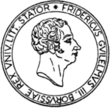With his oeuvre, Adolf Richard Fleischmann (1892-1968) fills a niche between strictly constructivist art and painted poetry. Stringency of composition and clearness of form characterize his works of art. The lightness of his brush-strokes, which has an almost expressive character, gives many of his paintings a particular charm. Fleischmann, who was born in Esslingen on the Neckar river, began his studies at the Royal College of Arts and Crafts in Stuttgart in 1908 after completing secondary school. In 1911 he changed to the Royal College of Art in Stuttgart, where he participated in Adolf Hölzel's class. He painted his first abstract works of art in 1925, during a period when he spent much of his time in Italy, where he lived from 1936 to 1938. He consistently developed the abstract expression in his paintings and painted his first geometric pictures in 1943. By 1950 he had found his own individual style which characterized his late work.
With his unique way of painting Fleischmann became internationally known and was considered by many to be the vanguard of Op Art. Fleischmann worked with an extremely reduced basic form: a small rectangle which he repeated countless times to form ever new rhythms and colour combinations. His work includes stringent compositions with "querres", coloured L-shaped elements painted with the same precision as the entire composition, as well as seemingly very free compositions which come alive solely by virtue of a continuous repetition of the same brush-stroke in different colours. In the latter, however, the brush-strokes are not executed precisely but are more expressive, reminiscent of a classic stroke in Chinese India-ink painting, the so-called "fei-bai" or "fleeting white", which was done with so dry a brush that the background shines through in places. In contrast to India-ink paintings, Fleischmann placed his brush-strokes over coloured surfaces, which brings about vibrating colour effects over and above those which arise from the rhythmic arrangement of the coloured lines.
In 1956 Fleischmann began using a most unusual medium in his paintings: corrugated cardboard. He experimented with L-shaped pieces of cardboard, fixing them like collages on the surface of the picture and using their similar directional nature as a structural element. He next applied a uniform white undercoat to this relief structure, imparting to it a completely homogeneous look. On this surface he then placed coloured highlights as, for example, the colours red, blue and black in Composition "#6". The red L-shaped element accentuates the cardboard L-shapes, while the blue area on the one hand contrasts with the red and on the other, its rectangular shape corresponds to the dynamically ascending black rectangles.






